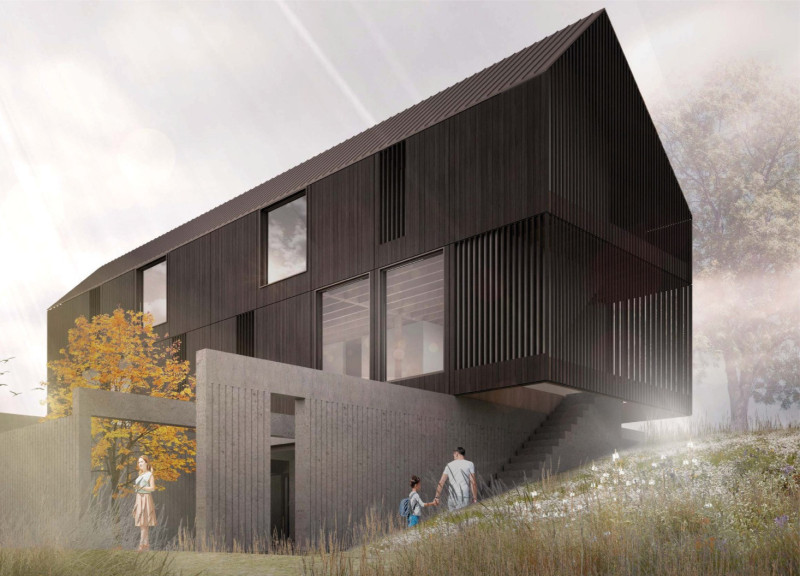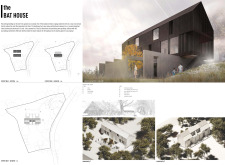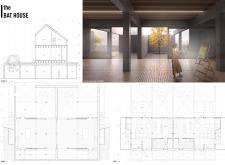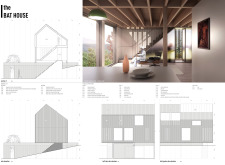5 key facts about this project
Design Intent and Functionality
The primary function of the Bat House is to serve as a residential space that promotes community living while maintaining privacy for its occupants. The architectural layout focuses on openness, with living areas arranged around central courtyards that allow for natural light infiltration and outdoor connectivity. The design employs a combination of flat and pitched roofs that not only serve as distinctive visual elements but also facilitate water drainage and enhance structural integrity.
Materiality and Construction
The project utilizes a range of carefully selected materials to ensure durability and environmental compatibility. Dark-stained wooden cladding envelops the structure, providing a contemporary appearance that reflects local building traditions. Exposed concrete foundations offer a sturdy base, reinforcing the structure's connection to the ground. Large glass facades are integral to the design, promoting natural ventilation and light while offering expansive views of the surrounding landscape.
Sustainable Strategies and Unique Design Approaches
Several unique design strategies set the Bat House apart from conventional residential projects. The incorporation of solar panels into the roof design emphasizes renewable energy use, reducing reliance on non-renewable resources. The building also employs a rainwater harvesting system that supports self-sufficiency and promotes environmental stewardship.
The architectural design fosters environmental integration by referencing natural habitats and aiming to enhance local biodiversity through thoughtful landscaping. This emphasis on ecological sensitivity highlights a modern approach to residential architecture, positioning the Bat House as a notable example of sustainable living.
For those interested in exploring the Bat House further, detailed architectural plans and sections are available. These will provide additional insights into the architectural ideas and design elements that define this project.


























